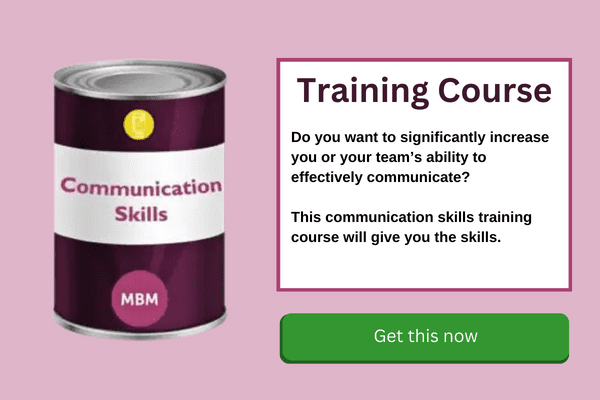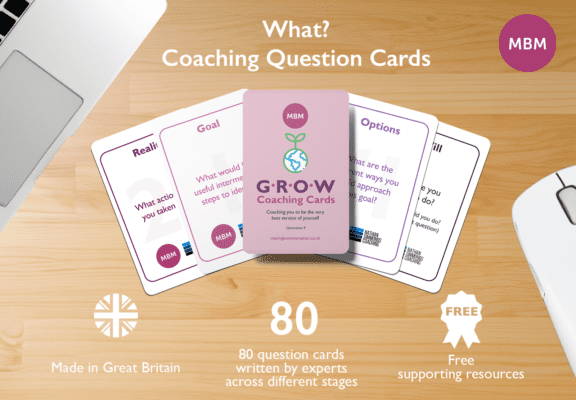Giving Feedback Is Tough, But It Can Be Fruitful with the Right Approach
Every leader needs to be effective when providing feedback. However, it can be challenging when you don’t have the right approach. Regardless of whether the feedback is formal or informal, we need to approach it in the right way to get positive results after the fact. That’s where the COIN feedback model comes in.
We have shared a number of articles about different feedback models over the years. (More on those later!) However, today we’re going to look specifically at the COIN feedback model.
Let’s start with this important topic and share these key focus areas with you.
Table of Contents:
- COIN Feedback Model Origins
- COIN Feedback Acronym
- 4-step Model Explained and How to Use It
- Following the COIN Feedback Model
- How to Apply the COIN Model
- Importance of Feedback
- Potential Barriers to Providing Feedback
- Feedback Statistics We Need to Know
- COIN Feedback Model in Comparison to Others
- Moving Forward for Effective Results
COIN Feedback Model Origins
So, what is the COIN feedback model and where did it come from?
The model was first introduced by Anna Carroll, MSSW, author, executive feedback coach, and speaker. She is an organisation development consultant specialising in facilitating, executive coaching, and training.

In her 2014 book, “The Feedback Imperative: How to Give Everyday Feedback To Speed Up Your Team’s Results“ she details her COIN feedback model, how to use it, and why it’s effective.

While there are many models out there related to feedback, the COIN feedback model does take a different look at how to make the process more effective. Let’s take a look.
COIN Feedback Acronym
So, the COIN feedback model stands for:
- Context/Connections – The situation or topic you want to talk about.
- Observations – Stating exactly what happened using facts.
- Impact – Explain how this situation affects others in your team or organisation.
- Next Steps – Agree clearly on changes or improvements in behaviour or performance expected in the future.
It’s important, in order to use the model correctly, to understand each of the 4 steps of the model. So let’s dig into that.
Sticky Learning ® is 7 times more effective than 1-day training courses. Plus, you will get a Chain of Evidence proving your Return on Investment. Discover soft skills training that changes behaviours long term.

4-Step Model Explained and How to Use It

#1: Context/Connections
First, we set the scene for the upcoming conversation. We provide the foundation of what will be covered during the feedback session. Also, we create connections with the team members to set the right tone for better interactions and to encourage the individual to participate. At this first stage of the COIN feedback model, you need to:
- Make the individual feel comfortable.
- Be specific about the details when explaining the overview of the situation. (e.g. time, date, location, etc.)
- Get them into the right frame of mind to receive the feedback.
- Hold the conversation in private when providing constructive feedback.
- Explain the format that you will cover as a general overview.
It is essential to get this first step right, otherwise, the rest of the conversation will suffer, and you will have an uphill to get the session back on track and achieve the required results.
#2: Observations
Next, for the second step of the COIN feedback model, we give the specific details of the situation at hand. Here, we share the details of what is being discussed. We should look at the following:
- Explain what you or others have observed (seen or heard).
- Share facts regarding the situation.
- Avoid using emotions or voicing judgements.
- Give the person a chance to participate. Hear from them about the situation and what they were experiencing.
- Use “I” statements to create clarity, such as, “I heard that….”, “I saw that…”, “I noticed that…”, etc.
- Be specific, and avoid being vague in your explanations.
So, you have explained the details and, hopefully, have created clarity about the situation.
#3: Impact
Now, for the third step of the COIN feedback model, you explain the impact the behaviour or action has had. For constructive feedback, you highlight the negativity that has resulted from the situation at hand. Here, for best results, you need to:
- Share the impact the situation has had on others involved.
- Explain the emotional impact this has caused.
- Acknowledge the lasting impact their actions or behaviours can have on the team, the company, or on their own reputations.
- Help them understand why this impact cannot continue.
At this stage, you need to create an agreement with the person involved in the feedback session about moving on to the fourth and final step.
#4: Next Steps
Finally, for the last step of the COIN feedback model, it’s all about moving forward and making changes, if applicable. For positive feedback sessions, encourage the team member to continue with their positive contributions. However, for constructive feedback conversations, we should:
- Give suggestions for improvements moving forward.
- Ask for suggestions about what could be done differently for better results.
- Create an agreement with the team members about productive changes.
- Gain commitment from those involved.
- Set clear timeframes for reviews.
- Put all the agreed action steps in writing for future reference and proper follow-up.

Following the COIN Feedback Model Steps
Over the years, having used the COIN feedback model, I can share that once I applied this model to my feedback sessions, I saw much better results. Let me share one of the many examples from my experience.
The Early Years and Wrong Approach
Prior to knowing about the model, I would approach giving feedback by following what I had seen being done by other “leaders” from my earlier career. Unfortunately, they were not great examples to follow. They simply used to criticise in front of anyone in any location and not care about the impact it had on us or others around us.
Having personally failed to really achieve the expected results after a number of feedback sessions, I knew I needed to change my approach. Obviously, something wasn’t working. In fact, a lot was wrong with my approach. But, in fairness, I knew no better at the time as a young new leader in my team and not having had proper examples to follow.
Applying the COIN Feedback Model
Once I learned about the model and used it over time, I saw that you really do get a more positive response from those involved as well as seeing better improvements and changes. Here’s what I learned from applying the COIN feedback model.
- You must follow the steps in sequence. Don’t mix them up or skip any. Otherwise, the results won’t be the same.
- Include the participant. One-sided conversations, when providing feedback, don’t lead to the right level of commitment or forward movement.
- Have proper follow-up. Otherwise, you fail to see that the feedback session has had the impact required. Therefore, don’t skip the “N” step of the COIN feedback model.
- Ensure they understand the consequences. It is vital that the third step of the model is very clear. The team member needs to properly understand that their actions or behaviours impact others, such as negatively the team dynamic.
Now, with these understandings about the difference the COIN feedback model has on these conversations, I can’t recommend it enough.
How To Apply the COIN Model

Let’s look at a real-life example of how the COIN feedback model is applied in a common workplace situation.
Bob has been working with you for over a year. Until recently, his performance has been above standard, with no issues regarding time and attendance, interpersonal relations in the team, or quality of work. However, in the last 2 weeks, you have received a number of complaints from team members that he is missing deadlines, showing up late for work, and is blatantly rude when asked questions or for updates on his part of the workload.
It’s time to have a word with Bob about what’s going on and how we can work together to get things back on track.
#1: Context Stage
First, you want to ensure that Bob is open and ready to receive the necessary feedback. Have your data and facts ready to present during the course of the conversation.
- When setting the scene and making the context clear, use positive and engaging words and tones. You want Bob to listen actively and participate.
- Because this includes constructive feedback, avoid sharing this in public where others in the team can hear. Instead, have a private location where interruptions can be avoided and where the feedback can be shared confidentially.
- Also, remember to use this first step to connect with Bob. Have a minute or 2 of small talk to make them feel at ease.
#2: Observations Stage
Next, share with Bob the main details of the complaints you have received about the main issues at hand.
Be sure to make clear to Bob that you’re there to help and support him. Also, ensure that Bob is already engaging at this stage. Don’t allow him to simply sit there and remain silent while the details are being shared. On the other hand, make sure that emotions are not starting to show at this stage either. Find the proper balance between the 2.
Encourage Bor to share any feedback from his side that might explain any of his recent behaviour.
#3: Impact Stage
Now, make clear to Bob the impact all of this is having on the team and the operations.
- What consequences have occurred as a result of his missed deadlines and lateness?
- How is his attitude impacting his colleagues when he interacts with them in such a rude way?
- Also, what lasting impressions can all of this have on his reputation within the team?
Again, include Bob in the discussion at this stage to ensure he fully understands the negative impact his actions are having on those around him and the damage it is doing.
#4: Next Step Stage
Finally, here we work with Bob to agree on the necessary steps moving forward. It is important that timeframes are set, and expectations are clear. Bob needs to commit at this stage to be part of the solution to the problems that have occurred. Without his commitment, the changes needed wouldn’t be possible.
Here, encourage Bob and offer your full support. Reassure Bob that you are there to guide and help him in any way possible so that positive improvements will happen. Also, encourage him to come back to you if he continues to face challenges that will prevent these changes from happening. He needs to know that you’re there to help, not scold.
Importance of Feedback

In any organisation, regardless of the size, feedback is an essential part of the growth and development process of our teams. As leaders, we need to be able to provide effective feedback to the different individuals in our company. This is where models such as the COIN feedback approach are necessary.
We need to provide feedback to:
- Recognise positive achievements and success
- Appreciate effort and contributions
- Improve the performance of team members
- Conduct annual or bi-annual official performance reviews
- Take immediate corrective action for mistakes that are occurring
- Address behavioural issues that are negatively impacting the team or operation
- Help individuals to grow and develop in the company
- Set expectations of future actions or results
- Build trust and transparency in the team
- Show confidence in others through corrective and forward-moving plans
These are all important reasons for providing feedback. However, how often do we get the expected results after feedback sessions? Probably not as often as we would like. That’s why knowing and using an effective feedback model is so important.
Importance of Using a Feedback Model
Over the years of leading different teams in hotels and resorts around the world, I have needed to provide feedback to my team members on a regular basis. From experience, I know that it’s important to provide effective feedback when dealing with so many guests on a daily basis. Otherwise, it can lead to woeful experiences for our guests during their stay or a major financial impact on the hotel.
One important improvement I found was having a model I could apply to ensure all the steps needed to provide effective feedback were followed. Believe me, before I applied this approach, I failed to get all the positive outcomes from these feedback sessions that were needed. So, after doing some training and my own research, I started using the COIN feedback model and soon saw better results.
Potential Barriers to Providing Feedback

From experience, having made mistakes in the past when providing feedback, it’s important to know the potential pitfalls we face when we don’t deliver feedback in the right way. This usually occurs when we fail to use tools such as the COIN feedback model to our advantage. Here are some common mistakes we make as leaders when handling feedback sessions.
#1: Avoid Using a Model
I know, from experience, that tackling feedback sessions is challenging. However, I want to reassure you that there is a way to make it better. And that’s by using a feedback tool or model. You will definitely get better results. If you approach your feedback sessions without using a model, such as the COIN feedback model, you won’t get the results you need. Instead, you will be faced with blank reactions or a lack of necessary change. Apply the model and see the results rack up! Here are some reasons for using a model.
- Better structure to the conversation
- Improved communication
- Increased participation
- Confirmation of future action
- Clear steps to follow so no information is missed
#2: Rush Into Providing Feedback
Now, a lot of time we rush into providing feedback to ensure the same action or behaviour is not repeated. However, while delaying giving feedback reduces its relevance, rushing in can lead to providing emotionally fueled or irrelevant feedback. A bit of time needs to be given in most situations so that we provide feedback that results in change.
#3: Give Feedback Without Participation
I have personally seen leaders I have worked with in the past try to pass off the following action as their legitimate approach to the annual performance review of their team members. They complete the form, with all of the comments and scores, call the team member to the office, and get them to read and sign it as quickly as possible. How can anyone think that this is an acceptable approach to completing such an important feedback session?
Therefore, ensure that during every feedback session, regardless of whether it’s formal or informal, everyone involved is actively participating. If you want positive change and buy-in moving forward, it has to be a two-way conversation with input from the participant as well.
#4: Avoid Giving Feedback
So, just as I mentioned in the last point about participation, having no proper feedback from leaders is not an acceptable approach. Therefore, those leaders who fear giving feedback or fail to recognise the importance of it are really creating a gap in their team’s performance. Basically, you run the risk of alienating your team members and creating divides. Look at some of these statistics from a 2023 article on Zippia.
- 65% of employees desire more feedback
- Companies that invest in regular employee feedback have 14.9% lower turnover rates than organisations where employees do not receive feedback
- Four out of ten employees who receive little to no feedback are actively disengaged from their work
- 69% of employees say they would work harder if they felt their efforts were being recognised through feedback
- 43% of highly engaged employees receive feedback at least once a week
- 98% of employees disengage from their work when they receive little or no feedback
So, as leaders, invest in providing feedback for better results.
#5: Lack of Commitment
Finally, when we fail to approach feedback in the right way, when we avoid applying a proper and effective model, we fail to create commitment from the team members receiving the feedback. The constructive feedback session is about making changes for improvement. However, without using the necessary tools, such as the COIN feedback model, we will fail to achieve the right amount of commitment required for change to happen.
Leaders, be aware of these barriers and know what to do to overcome them. Otherwise, you will fail to achieve the results you need because of ineffective feedback.
Feedback Statistics We Need to Know

In addition to the above-referenced Zippia statistics about feedback, I did some more digging about why feedback is so important to our team members and want to share some of the statistics I found.
In a 2021 article for Forbes magazine titled “10 Shocking Workplace Stats You Need To Know“, I found some interesting data that highlights the real need for effective feedback conversations to happen in any company.
Example #1: Why Staff Leave
Leigh Branham, author of The 7 Hidden Reasons Employees Leave revealed that 89 percent of bosses believe employees quit because they want more money. As much as any boss would love this statistic to be true (because it basically pardons any manager from wrong-doing) it’s simply not true. Only 12 percent of employees actually leave an organisation for more money.”
This was their #2 stat in the article. Initially, you might not think it’s directly related to feedback – but look again. Think about the regular feedback conversations we’ve been talking about, formal and informal. If they were really happening, and connections between the team members and the leaders were being created during them, 89% of bosses would have no excuse to think that the above statistic was even close to true. Feedback sessions help us identify what’s really happening with our team members, what motivates them and what creates disengagement.
Example #2: Importance of Appreciation
Another statistic on their list goes as follows:
Global studies reveal that 79 percent of people who quit their jobs cite ‘lack of appreciation’ as their reason for leaving. As two guys steeped in research about the power and impact of employee appreciation, this isn’t a shocker to us, but it is to many of the companies we consult. People don’t leave companies. They leave bosses.”
Again, look at what we’ve been telling you regarding the importance of feedback sessions. Without using these conversations, with the help of tools such as the COIN feedback model, you will miss golden opportunities to recognise and appreciate the hard work and effort of different members of your team for their contributions.
I really cannot emphasise enough the importance of these feedback sessions and the difference they make when driving performance, productivity, engagement and longevity in the workplace.
Example #3: Bad Managers and Feedback
In 2018, Predictive Index ran an extensive study on people management with 5,103 employees from 22 different industries taking part. In their results, they found a very interesting statistic that really pushes home the point I’ve been making about the importance of feedback.
The results regarding bad managers, those scoring 1-4 out of 10 in the results, showed that 54% of the “bad managers” had the following common trait – “isn’t open or interested in feedback”.
When the leaders fail to show the necessary focus for giving and receiving feedback, the team members notice, and it reflects on their impression of said leader. So, out of 633 of the “bad leaders”, 54% failed to identify the need for feedback in such a way that would have given their team a better connection to them in this area. This, of course, is very worrying indeed.
COIN Feedback Model in Comparison to Others

As mentioned earlier in the article, there are many feedback models out there. So, how does the COIN feedback model compare to some of the other popular models out there? Let’s see.
#1- SBI Model
Our first comparison is with the SBI feedback model. The acronym stands for:
Situation: This is the start of the conversation where you set the scene of the overall event that has occurred.
Behaviour: Here, we explain the specific behavioural issues you need to discuss.
Impact: Finally, you make clear the impact this has all had on others or the operation.
SBI Vs. COIN Feedback Model
Where the 3-steps cover much of what we see in the COIN feedback model, there is an important, perhaps critical, step missing and that is what comes next. This model fails to address the future actions and areas of improvement that are expected.
#2- STAR Model
This model covers the following:
Situation/Task: Just like with the Context step, you describe the details of the situation or task you need to address and provide feedback about.
Action: Similar to the observation step of the COIN feedback model, the action is explained that was seen or heard.
Result: This corresponds with the Impact step of the COIN model and explains what direct result the person’s actions or behaviour has had.
This approach is also a common model to use in behavioural interviews.
STAR Vs. COIN Feedback Model
Again, like with SBI, this model fails to address what comes next. Therefore, the commitment and follow-up we need to check for improvements are missing.
#3- AID Model
Here, we have another 3-step model that’s easy to follow.
Action: The first step is to address the issue at hand and highlight the actions in question.
Impact: As with other models, this important step of discussing consequences is present.
Desired Outcome: We see this model addressing what comes next and what future action is required for better results.
AID Vs. COIN Feedback Model
As you can see, using the AID model, we jump straight into discussing the issue by starting the conversation about the action involved. However, unlike the COIN feedback model, the AID model fails to set the scene and create the connection required for the following steps to be received more effectively.
While there are many models out there, Anna Carroll’s 4-step COIN feedback model really does address the key steps necessary to approach feedback sessions effectively.
Moving Forward for Effective Results
Remember that feedback is an essential element for team growth, development and improvement. In order to have the best possible results, ongoing feedback is required. You need to find the model that suits you best.
Keep these important action steps in mind:
- Use a model – create structure
- Include the participant – have a proper conversation
- Create buy-in and commitment – have action steps that they will agree to
- Have proper follow-up – you need to check that change is happening
Here at MBM, we have many resources available that can continue to support you on your journey to improve your feedback skills and approach.
Check Us Out
Check out these related articles that will add more insight into providing feedback.
- Boost Feedback Model
- AID Feedback Model
- SBI Model (Situation-Behaviour-Impact™) for Feedback
- Feedback Sandwich
- 4 Different Types of Feedback You Can Ask For or Give
- Three Types of Feedback and How to Use Them Properly
- Employee Feedback
Also, check out our amazing selection of coaching cards for you and your team. They can help you all achieve better results.

Finally, reach out to us to discuss your training needs and how we can partner up to drive improvements in your team and build wonderful team dynamics for overall success. Contact us.




